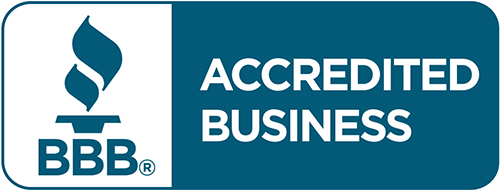8-Hour vs. 40-Hour HAZWOPER Training: Which Do You Need for OSHA Compliance?
Posted by: santiago jimenez on October 7, 2025
8-Hour HAZWOPER vs 40-Hour: Which Do You Need for OSHA Compliance?
OSHA requires HAZWOPER training for workers exposed to hazardous materials. Choosing the right course matters. Picking the wrong one could mean you’re out of compliance—and that can lead to big fines.
This article explains the difference between the 8-hour refresher and the full 40-hour HAZWOPER training. You’ll learn who needs each course, what they cover, and how to stay compliant with OSHA’s rules under 29 CFR 1910.120.
What is HAZWOPER?
HAZWOPER stands for Hazardous Waste Operations and Emergency Response. OSHA created the rules to protect workers who:
- Clean up hazardous waste
- Work at treatment, storage, or disposal facilities
- Respond to spills or emergencies involving dangerous substances
The goal is to prevent injuries and ensure worker safety when handling chemicals or toxic materials.
What’s the Difference Between 8-Hour and 40-Hour HAZWOPER Training?
The 40-hour HAZWOPER training is a full course for workers new to hazardous waste work. It covers all the basics needed to safely work around dangerous chemicals and waste.
The 8-hour refresher is for workers who already completed the 40-hour course. It’s done once a year to stay current with OSHA rules and safety practices.
What’s in the 40-Hour HAZWOPER Training?
This training gives new workers the knowledge they need to work safely in hazardous areas. Topics include:
- Toxicology Basics – How chemicals affect your health
- PPE Levels A–D – How to choose and wear safety gear
- Site Monitoring – How to check for hazards and test air quality
- Decontamination – How to clean people, gear, and work zones
- Confined Spaces – Safety rules for small or enclosed areas
- Emergency Response – What to do during a chemical spill or other emergency
This course helps workers understand dangers, protect themselves, and follow safety rules.
What’s in the 8-Hour HAZWOPER Refresher?
This course keeps trained workers up to date each year. It includes:
- Regulation Changes – Updates to OSHA’s 29 CFR 1910.120 standard
- Hazard Review – Reminders on how to spot dangerous materials
- Emergency Response Updates – New safety steps and communication tools
- Medical Monitoring – Health checks and how to report injuries
- Real Case Studies – Lessons from past incidents
It’s required every 12 months to stay OSHA compliant and to keep workers sharp.
What Does OSHA Say About These Requirements?
OSHA rules under 29 CFR 1910.120(e)(3) require 40 hours of initial training for workers at hazardous waste sites.
To stay certified, workers must take the 8-hour refresher every year, as required under 29 CFR 1910.120(e)(8).
These rules protect workers by making sure they have the training they need to stay safe in high-risk environments.
Who Needs 40-Hour HAZWOPER Training?
Workers who handle dangerous waste, respond to chemical spills, or supervise these activities must take 40-hour HAZWOPER training. This training helps them understand the risks and how to stay safe before doing hands-on work.
Which Jobs Require 40-Hour Certification?
The following workers must take the full 40-hour course:
- General Site Workers – Work with hazardous waste cleanup, storage, or treatment
- Emergency Responders – Respond to spills or chemical releases
- Supervisors – Oversee safety, site monitoring, and worker protection
- Equipment Operators – Move or handle contaminated materials
These jobs involve serious hazards, so full training is needed.
When Is 40-Hour Training Required?
Here are common situations where the 40-hour course is required:
| Role | Exposure Scenario | Training Needed |
|---|---|---|
| General Site Worker | Works directly with hazardous waste | 40-Hour Initial Training |
| Emergency Responder | Responds to chemical spills or releases | 40-Hour Initial Training |
| Supervisor | Oversees workers in dangerous environments | 40-Hour Initial Training |
OSHA says workers must be fully trained before working in high-risk conditions.
What Field Training Is Required?
After the classroom part of the 40-hour course, workers must complete three days of hands-on field training. During this time, they:
- Practice decontamination steps
- Use tools to check air quality
- Run emergency response drills
All training is done under a qualified supervisor. This step helps make sure workers are ready before they work on real hazardous sites.
Who Needs the 8-Hour HAZWOPER Refresher?
If you’ve taken 24-hour or 40-hour HAZWOPER training, you must complete an 8-hour refresher course every year to stay OSHA compliant. This keeps your safety knowledge up to date and helps prevent mistakes on the job.
Which Workers Must Take the Refresher?
Anyone who already has a HAZWOPER certification needs this annual course, including:
- Workers with a 40-hour HAZWOPER certificate
- Workers with a 24-hour HAZWOPER certificate
OSHA requires this to make sure everyone stays sharp and aware of new risks.
How Often Is Refresher Training Required?
The 8-hour refresher must be taken once every 12 months after your last HAZWOPER training—whether that’s the original 40-hour course or your last refresher.
This timing lines up with medical checkups that many hazardous waste workers also need to complete each year.
What Does the 8-Hour Refresher Cover?
The course includes the latest safety changes and updates such as:
- New OSHA/EPA Rules – Recent changes to safety laws
- Improved PPE Techniques – New materials and gear for better protection
- Better Communication Tools – Upgraded systems for emergency response
- Updated Safety Plans – Improved emergency and evacuation procedures
These updates help workers respond quickly and safely when working in hazardous environments.
Comparing 8-Hour and 40-Hour HAZWOPER Training
Both HAZWOPER training options help keep workers safe and meet OSHA rules. But they’re not the same.
- The 40-hour course is for workers just starting in hazardous waste operations. It’s long and covers everything in detail.
- The 8-hour refresher is for trained workers to stay updated and keep their certification current.
Course Comparison
| Course | Duration | Main Topics | Valid For |
|---|---|---|---|
| 40-Hour Initial Training | 40 hours | PPE, toxic chemicals, decon, confined spaces | 1 year |
| 8-Hour Refresher Training | 8 hours | Rule updates, emergency response, hazard review | Must repeat yearly |
What’s in the 40-Hour Training?
The full course includes:
- Chemical types and health risks
- Air monitoring and site testing
- Respirator use and safety gear (PPE)
- Decontamination setup and procedures
- Emergency planning and drills
- OSHA regulation overview
This training gives new workers the skills they need to work safely around hazardous waste.
What’s in the 8-Hour Refresher?
This shorter course is a review. It includes:
- New OSHA or EPA rules
- Safer PPE methods and tools
- Updated emergency steps and evacuation plans
- Hazard reminders and real-life case studies
The refresher helps workers stay sharp and follow current safety laws.
Why Does Training Length Matter?
- The 40-hour training gives you certification for 1 year.
- After that, you must take the 8-hour refresher every 12 months to stay certified.
Skipping refresher training can mean losing your certification and failing an OSHA inspection.
What About the 24-Hour HAZWOPER Training?
The 24-hour course is for workers with low-risk exposure. These workers don’t handle hazardous materials all the time but still need basic safety knowledge.
It’s less in-depth than the 40-hour course but more than basic awareness.
How Can Employers Pick the Right Training?
Employers should look at:
- Job Tasks – Does the worker handle hazardous materials?
- Exposure Level – How often is the worker near dangerous waste?
- OSHA Rules – What level of training is required for the job?
Choosing the right course keeps workers safe and companies in compliance.
How Should Employers Track Training?
Good recordkeeping is key. Employers should:
- Keep digital records of training dates and certificates
- Use reminders for upcoming refreshers
- Store all training info in one place
This makes OSHA audits easier and helps avoid fines.
How to Stay Compliant Year-Round
To keep up with OSHA rules:
- Update your site safety plan regularly
- Schedule medical checkups if required
- Calibrate safety equipment
- Run safety drills often
- Review training needs every quarter
These steps keep safety programs current and effective.
Benefits of 40-Hour vs. 8-Hour HAZWOPER Training
40-Hour Training:
- Helps workers spot chemical hazards early
- Teaches how to use safety gear properly
- Prepares teams for emergency response
- Builds a strong safety foundation
8-Hour Refresher:
- Keeps up with rule changes
- Reinforces proper cleanup and evacuation steps
- Keeps workers sharp and reduces accidents
Why Is the 8-Hour Refresher So Important?
- Keeps certifications active
- Makes sure workers know current safety rules
- Helps prevent accidents and costly violations
Regular refresher training has been shown to reduce workplace injuries and improve emergency response.
How Does HAZWOPER Training Lower OSHA Fines?
When workers are trained and certified:
- Fewer injuries happen
- Companies avoid expensive OSHA fines
- Training records can protect the company during audits
- It builds trust with clients and regulators
Where and How to Get HAZWOPER Certified
You can take HAZWOPER training through approved providers across the U.S. These courses are offered in online, in-person, or hybrid formats, so you can choose what works best for your team.
To get certified, workers must enroll, complete the course, and pass a test at the end.
Training Format Options
| Format | What It Includes |
|---|---|
| Online | Interactive lessons, quizzes, and virtual practice—ideal for remote or flexible work |
| In-Person | Hands-on training with safety gear and live instruction |
| Hybrid | Online theory + local, in-person field exercises |
All formats must follow OSHA’s training guidelines to be valid.
How Long Does Training Take?
-
40-Hour Initial Training:
Takes 5 full days. Includes a final exam and supervised field work. -
8-Hour Refresher Training:
Takes 1 full day. Ends with a short test to confirm understanding.
When the course is completed, workers get a certificate—either printed or digital. They must keep this certificate in case of an OSHA inspection.
Who Offers OSHA-Approved HAZWOPER Training?
There are many trusted training providers that offer OSHA-compliant courses. Look for:
- Certified instructors
- Up-to-date course content
- Immediate certificate after passing the course
You can find local or national providers through:
- OSHA-authorized training centers
- Safety consulting firms
- Online education platforms specializing in compliance
Why Certification Matters
Getting the right HAZWOPER certification:
- Helps workers do their jobs safely
- Keeps your company OSHA-compliant
- Reduces liability and risk of fines
- Builds a strong safety culture
By choosing the correct training level, employers ensure workers are prepared and protected in hazardous environments.
Frequently Asked Questions
What Happens If Workers Don’t Complete Required HAZWOPER Training?
If workers skip required training:
- They are more likely to get hurt or exposed to toxic materials
- The company could face OSHA fines, which can be thousands of dollars per violation
- The business might lose contracts, get a bad reputation, or be held legally responsible after an accident
Training is not just a rule—it protects lives and prevents costly mistakes.
Can HAZWOPER Training Be Done Online?
Yes. Many accredited providers offer online HAZWOPER training.
- Online courses cover all the important topics
- They include videos, quizzes, and simulations
- Workers can learn at their own pace
Note: For the 40-hour course, some hands-on training may still be required. That part can be done in-person or through a hybrid option.
How Can I Tell If a Training Provider Is OSHA-Approved?
To check if a provider is legit:
- Look on the OSHA website for authorized trainers
- Visit the provider’s website—they should list their certifications
- Read reviews from other students
Only take training from a trusted provider to make sure your certificate is valid and OSHA-compliant.
What If Someone Misses the 8-Hour Refresher?
If a worker misses their annual refresher:
- They should be rescheduled for the next session right away
- Document the missed date and how the issue was fixed
- Make sure they don’t return to hazardous work until they’ve completed it
This keeps your business in compliance and your team safe.
What About Remote Workers—Do They Need HAZWOPER Training?
Yes—remote workers who may deal with hazardous waste or respond to emergencies must still be trained.
- Online courses work well for remote teams
- If their role requires hands-on skills, you’ll need to arrange practical training too
- Employers should make sure remote staff know the emergency plans and safety rules
Even if they’re offsite, OSHA standards still apply.
How Should Employers Keep Track of Training Records?
Good recordkeeping is key. Best practices:
- Use a digital system to log training dates and certificates
- Set reminders for when refresher training is due
- Keep records organized and ready for OSHA audits
- Update info right after each course
Clear records show you’re serious about safety—and they protect you if OSHA comes calling.
Welcome to CertifyMe.net
CertifyMe.net has offered online forklift certification since 1999. With Our Convenient online program. your employess can earn their certification in an hour or less.
Browse Online Certifications:
This low-cost program can be compeleted anytime, anywhere!







